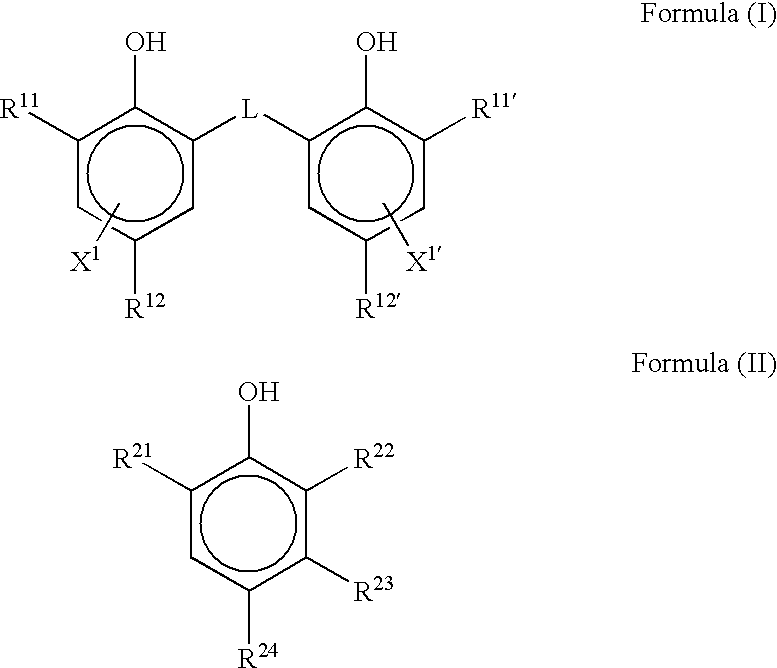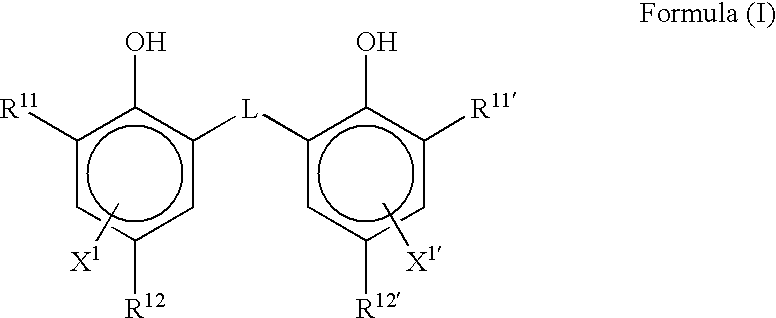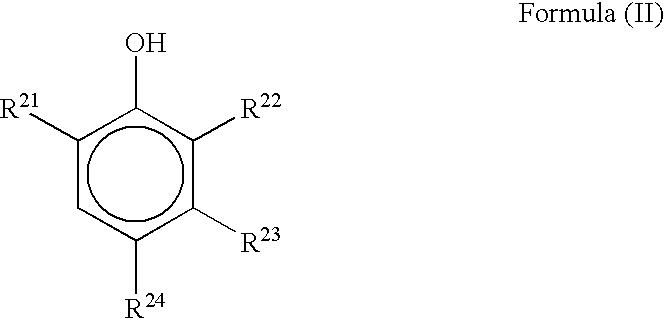Thermal development photosensitive material
a technology of photosensitive materials and thermal development, applied in the direction of photosensitive materials, instruments, nuclear engineering, etc., can solve the problems of difficult to give a pure black tone, unsatisfactory output system of medical images, and insufficient tone control
- Summary
- Abstract
- Description
- Claims
- Application Information
AI Technical Summary
Benefits of technology
Problems solved by technology
Method used
Image
Examples
example 1
[0242] Production of a PET Substrate
[0243] PET having an intrinsic viscosity (IV) of 0.66 (measured at 25.degree. C. in phenol / tetrachloroethane=6 / 7 (weight ratio)) was obtained in a usual manner using terephthalic acid and ethylene glycol. This was pelletized, then dried at 130.degree. C. for 4 hours, melted at 300.degree. C., extruded from a T-die, and quenched to form an unoriented film having such a thickness that a film thickness after heat-setting reached 175 .mu.m.
[0244] This film was longitudinally stretched to 3.3 times with rolls different in circumferential speeds, and then transversely stretched to 4.5 times with a tenter. At these times, respective temperatures were 110.degree. C. and 130.degree. C. Subsequently, the film was heat-set at 240.degree. C. for 20 seconds, and then transversely relaxed by 4% at the same temperature. Thereafter, a chuck portion of the tenter was slit, and both ends were subjected to knurl processing. The product was taken up at a rate of 4 kg...
example 2
[0277] Production of a Substrate
[0278] A substrate was produced in the same manner as in Example 1 except that both surfaces of a PET film with a thickness of 175 .mu.m which was colored blue to a density of 0.170 (measured with a densitometer (PDA-65 manufactured by Konica)) were subjected to corona discharge at 8 W / m.sup.2.min.
[0279] Preparation of a Photosensitive silver Halide Emulsion
[0280] Phenylcarbamoyl gelatin (88.3 g), 10 ml of a 10% methanol aqueous solution of a PAO compound (HO(CH.sub.2CH.sub.2O).sub.n(CH(CH.sub.3)CH.su-b.2O).sub.17(CH.sub.2CH.sub.2O).sub.mH; m+n=5 to 7) and 0.32 g of potassium bromide were dissolved in 5,429 ml of distilled water to form an aqueous solution A.
[0281] Further, 0.703 mol / liter of potassium bromide and 0.013 mol / liter of potassium iodide were dissolved in 659 ml of an aqueous solution containing 0.67 mol / liter of silver nitrate to form an aqueous solution B. Subsequently, while the aqueous solution A was maintained at 45.degree. C. and the...
example 3
[0305] In the same manner as in Example 1, a PET substrate was produced and subjected to surface corona treatment.
[0306] (1) Preparation of an undercoat layer coating solution
3 Formula (1) (for an undercoat layer on a photosensitive layer side) PESRESIN A-515GB manufactured 234 g by Takamatsu Yushi K.K. (30 mass % solution) Polyethylene glycol monononylphenyl ether 21.5 g (average ethylene oxide number = 8.5, 10 mass % solution) Polymer fine grains (MP-1000 manufactured 0.91 g by Soken Chemical Co., Ltd., average grain diameter 0.4 .mu.m) Distilled water 744 ml Formula (2) (for a first layer on a back surface) Styrene-butadiene copolymer latex 158 g (solid content 40% by mass, styrene / butadiene mass ratio = 68 / 32) 2,4-Dichloro-6-hydroxy-S-triazine sodium salt 20 g (8 mass % aqueous solution) Sodium laurylbenzenesulfonate 10 ml (1 mass % aqueous solution) Distilled water 854 ml Formula (3) (for a second layer on a back surface) SnO.sub.2 / SbO (9 / 1 mass ratio, average 84 g grain diamet...
PUM
| Property | Measurement | Unit |
|---|---|---|
| temperature | aaaaa | aaaaa |
| temperature | aaaaa | aaaaa |
| time | aaaaa | aaaaa |
Abstract
Description
Claims
Application Information
 Login to View More
Login to View More - R&D
- Intellectual Property
- Life Sciences
- Materials
- Tech Scout
- Unparalleled Data Quality
- Higher Quality Content
- 60% Fewer Hallucinations
Browse by: Latest US Patents, China's latest patents, Technical Efficacy Thesaurus, Application Domain, Technology Topic, Popular Technical Reports.
© 2025 PatSnap. All rights reserved.Legal|Privacy policy|Modern Slavery Act Transparency Statement|Sitemap|About US| Contact US: help@patsnap.com



